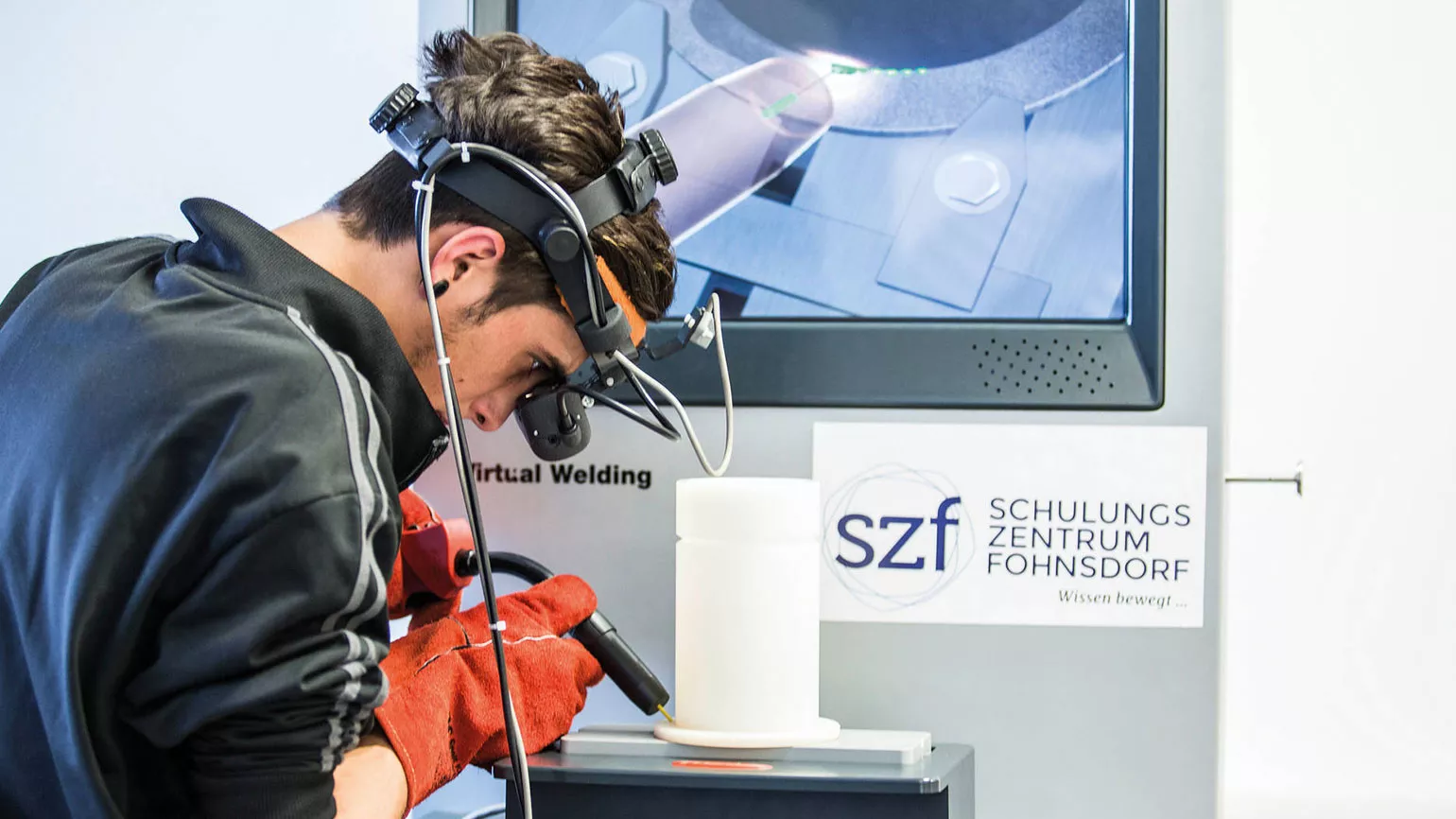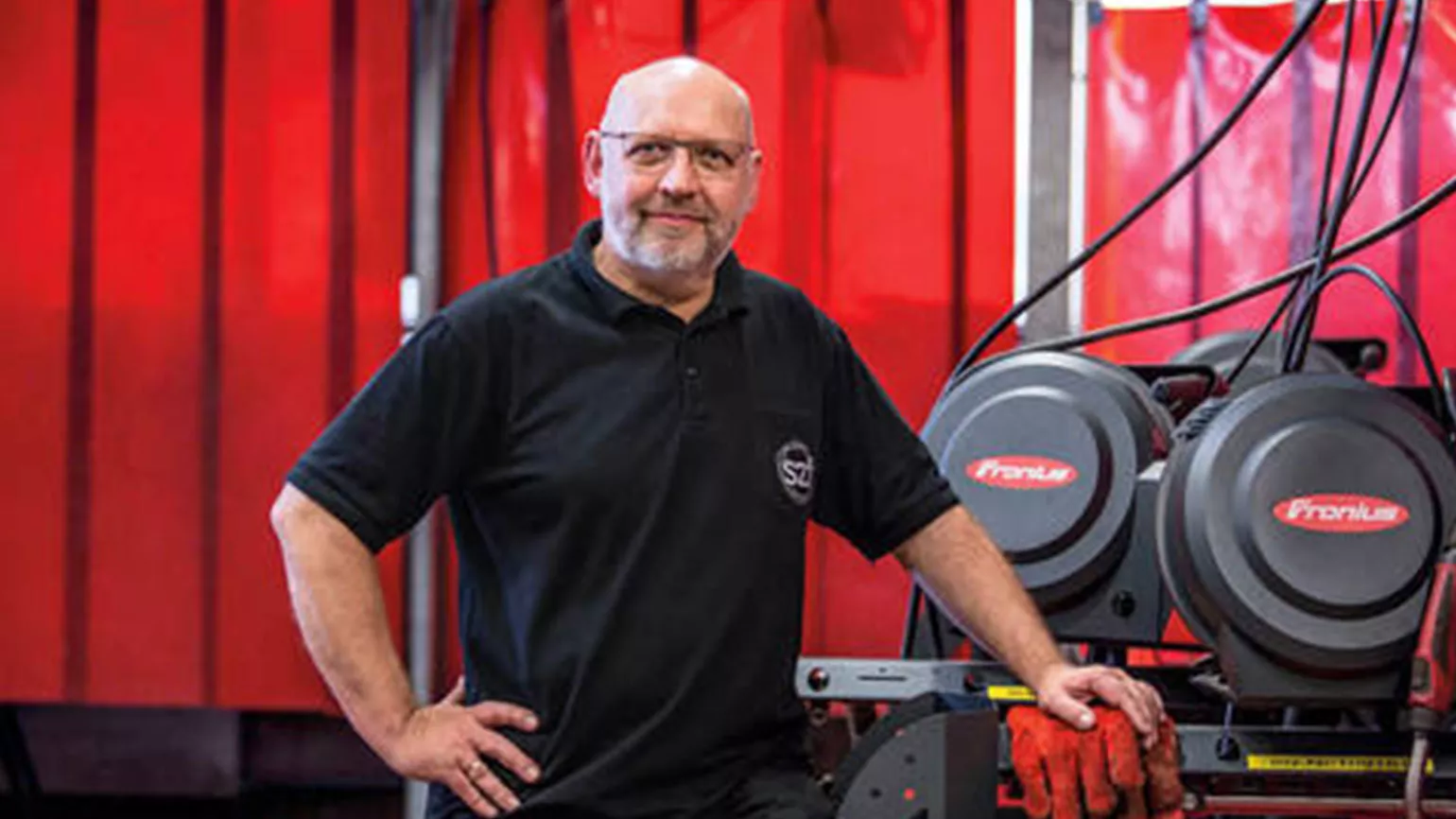Learning to weldwith a personal trainer
The Fohnsdorf Training Centre in Styria, Austria, trains welders using virtual training. The Virtual Welding simulator from Fronius enables one-on-one training to be provided for the centre’s students, an approach that has a positive impact on training quality.
The Virtual Welding system allows users to learn and practise the use of various welding processes in a virtual reality (VR) environment. The currently available processes are manual arc welding, gas metal arc welding (MIG/MAG ) and, a recent addition, tungsten inert gas welding (TIG). Single-V butt welds, fillet welds, square butt welds, pipe joints and overlay welding can all be practised in various positions using plastic workpieces attached to the stand-up terminal. A welding torch is used to create a seam that is displayed in real time on the simulator’s touchscreen display and the 3D glasses worn by the user.
The Fohnsdorf Training Centre is one of the most modern and innovative professional training establishments in Austria. Situated in Murtal in Styria, it has been operating on behalf of the Employment Agency since 1975 to provide specialist staff for commerce and industry. The training courses on offer cover the metal technology, electrical engineering, tourism and office/IT sectors, plus the more generic areas of CAD, languages, transport and logistics. Around 1500 students a year are supported by 170 highly qualified employees and the latest teaching methods. The Fohnsdorf Training Centre utilises various digital approaches, such as e-learning, blended learning and e-testing, to provide the students with state-of-the-art training facilities.
This endeavour led to the addition of two welding simulators from Fronius to the Centre’s training operations. Initially, Virtual Welding was primarily used to assess the suitability of potential students for a welding course. “This allowed us to examine their basic handling skills and suitability for the course without first having to go through the in-depth safety training that would be necessary in a real welding environment,” outlines Zuber. Virtual Welding was then gradually introduced into the training programme; there are now five welding simulators in use at Fohnsdorf.
VIRTUAL TRAINER IMPROVES QUALITY
“Ghost”, the virtual trainer, is a huge asset when learning how to handle the torch. It shows the path the torch should take and indicates the correct speed, angle and distance between torch and workpiece, giving direct, visual feedback when the student starts to drift away from one of the set values. At the more advanced levels, welding is unguided, in other words the Ghost does not show the correct torch path. However, even here it offers support in the form of a playback function in which users can see not only their weld, but also review the complete welding operation. Feedback is provided by displaying the torch path taken by the user and the recommended one at the same time so they can be directly compared.
The one-on-one training facility and the ability to carry out “virtual practising” has transformed welding training in Fohnsdorf. Instead of imparting the basic skills and practising torch guidance using real devices from the very beginning, the students can first learn from simulation, resulting in savings in resources and costs as consumables are not required. The risk of injury is also reduced, as students are trained in how to handle the torch before being confronted by high levels of heat and a dazzling arc. “Each new task is first practised in a virtual environment before being tried out in earnest,” explains Zuber. Virtual welding helps save time, as there is no need for any pre- or post-processing of workpieces during the initial stages of learning a new process. The Fohnsdorf Training Centre uses the time saved to intensify the training, for instance to carry out more exercises and weld more demanding workpieces.
INTUITIVE LEARNING MAKES TRAINING FUN
The students have generally responded very favourably to Virtual Welding. When the rankings appear, which display the percentage points awarded for torch guidance, Virtual Welding starts to generate something of a computer game atmosphere. Another didactic feature is that the learning process with Virtual Welding is highly intuitive. “Following a brief explanation of how the simulator works, we simply encourage our students to start welding,” Zuber points out. “The feedback provided by the Ghost shows how the torch should be held and guided. The learning is so subtle that when a student picks up a torch to start doing some real welding, it is held correctly almost by instinct. It’s as if the students are unaware that they’ve already acquired this skill during their highly productive training sessions on the virtual welder.”
An increase in the number of “virtual trainers” for welding training has already received the green light. An additional simulator, which will also offer TIG welding, will be added to the line-up in 2017, enabling the Fohnsdorf Training Centre to better address the requirements of industry. After all, what is the purpose of a personal trainer if not to get you fit – in this case fit to cope with the demands of industry.
“We were immediately blown away by how virtual welding can assist and fundamentally change the training programme, so we thought about how we could implement it and purchased our first two simulators in April 2010”
GERHARD ZUBER, Head of the Welding Technology/Transport Department at the Fohnsdorf Training Centre


